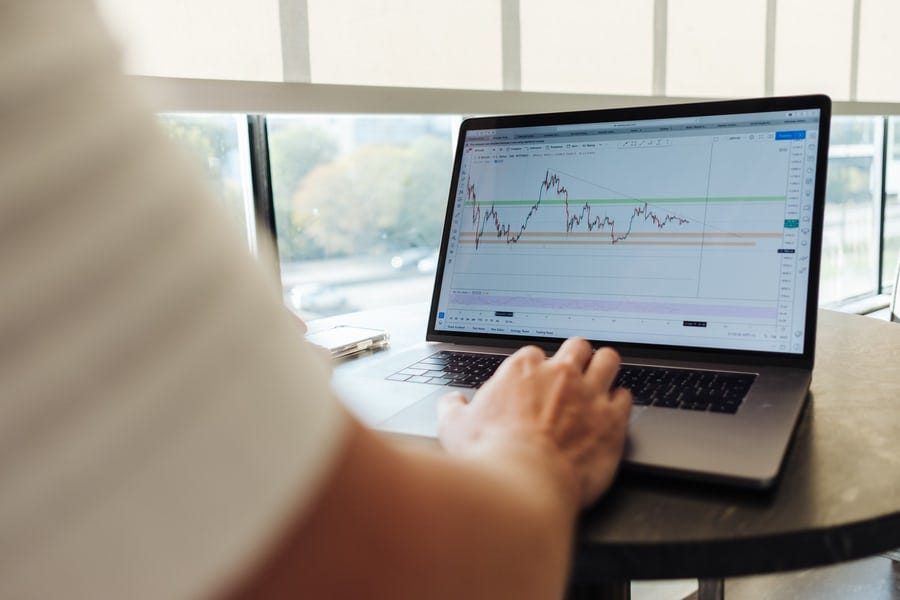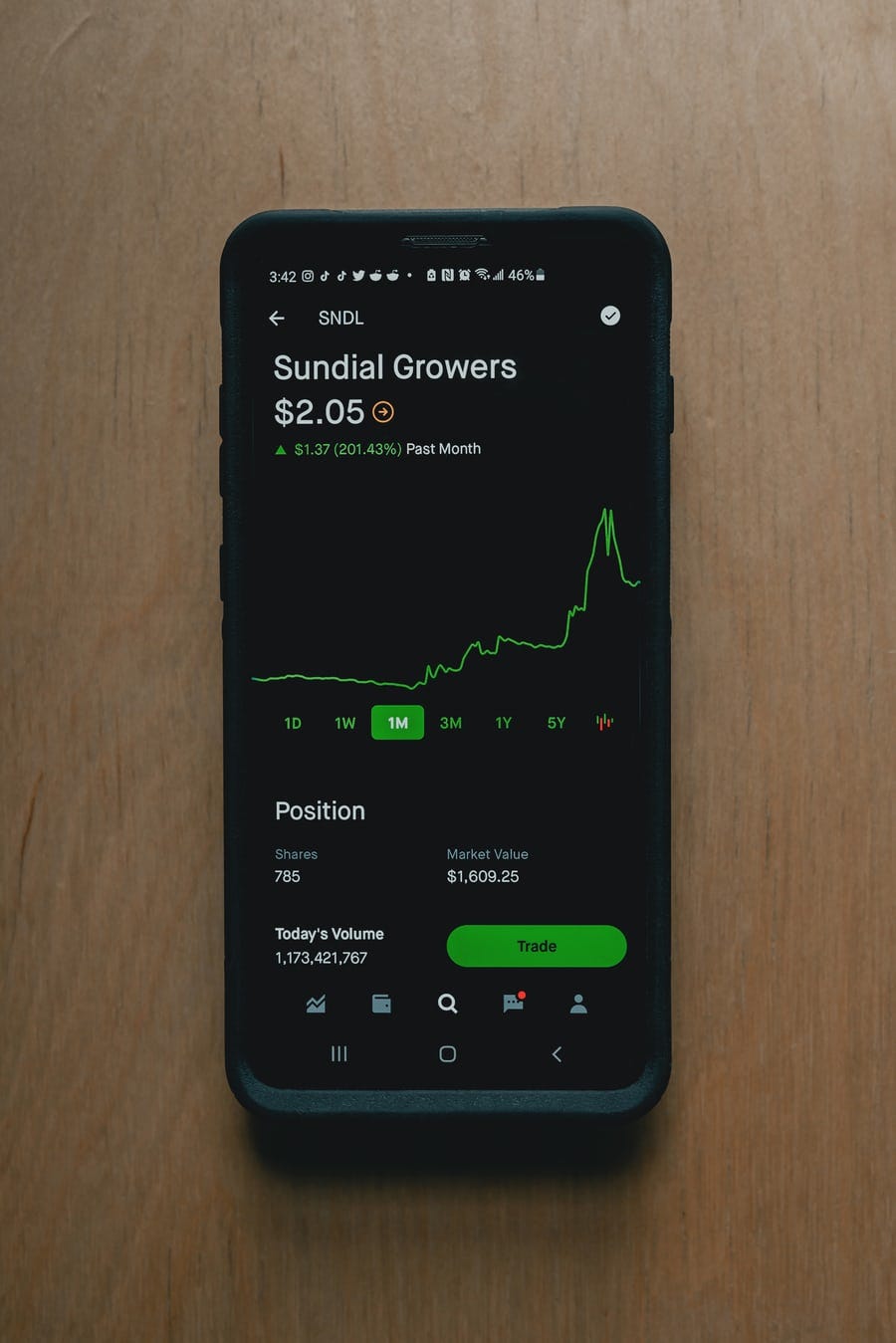Regardless of the industry you’re in or major you have, having a basic understanding of how to invest and what financial analysis involves doesn’t hurt especially since it can apply to your own portfolio.
Below I’ve compiled a comprehensive guide on what I think everyone who wants to be ahead of 80% of the population should know.
Risks & Returns
How do we mitigate risk?
The golden question by every investor.
3 Ways:
-Increase potential returns
-Net profit / max risk
-You want to find the sweet spot to decrease risk and increase returns
Ironically the best place to earn a consistent return trailing the major indexes without the volatility, monitoring, margin buying, etc. is through real estate.
Real estate offers these benefits to your portfolio:
-Alternative asset = more diversity
-Use of capital and utility
-Physical tangible asset
-Ran as a business = tax advantages can deduct expenses
-Less volatility
-Can take out a mortgage that will have a 100% return if the property stays in good condition and in an in-demand area
People will always need to live somewhere. The stock market will forever fluctuate!
Plus if you don’t have enough money to invest, take care of tenants and or want to renovate a physical property, you can invest in Crowdstreet, YieldStreet or Fundrise (not sponsored) which are crowdfunding platforms. They allow you to invest in properties across the US that have their own management system so you don’t have to take care of the properties, just invest in them.
If you want to get into the market and simulate your real estate holdings to equities, check out REITS (Real Estate Investment Trusts) as another option as well.
Before we move on, the best part about real estate is that you can take less risk and earn more return!
It’s a win-win.
Overall: RISK WHATEVER WILLING TO LOOSE
Average Stock Market Returns
Compared to real estate, gold or crypto, the average stock market returns over past 90 years for the S&P 500 (largest 500 companies) returned 10% year over year.
Now this data depends on which stocks you’re monitoring but generally speaking overall the stock market in the US has grown about 10% per year not accounting inflation and can run anywhere between 2–3% per year.
Regardless of a recession or not, we’ve seen a return in 13% alone last year for the S&P 500.
NOTE: These are historical returns and by no means is this going to show you what’s going to happen in the next 20 years. We really don’t know what the future holds but generally speaking because society tends to move forward we will probably see over a long period of time the stock market is likely to go up but of course nothing here is guaranteed.
Some years the stock market for certain indexes (S&P 500, Dow Jones, NASDAQ, Russell 2k) might grow 30 or 40% but in other years like what we saw in 2008, the stock market declined about 40% in one year so this was a pretty large decline so its going to fluctuate a lot and what you’ll learn with investing is that you do need to have thick skin.
Thick skin means that sometimes you want to be able to hold you investment through a lot of turbulent times such as crises and corrections. This is part of the passive investing approach where you aren’t trying to beat out the market rather grow with it.
Don’t be someone who gets scared when stocks are down 40 or 50% and end up selling.
Buy the dip instead meaning buy low sell high is best.
Your portfolio mixed with your risk tolerance will help you determine if you can ‘sleep well at night’ meaning that being over-leveraged (buying on margin-taking on debt) or putting all your savings into one stock is dangerous.
I wouldn’t suggest more than 5–10% of your net worth in 1 individual stock. There are thousands to choose from and 11 sectors so diversification is key. Never buy on margin because your goal is to mitigate risk while gaining return and the best way to do that is by knowing your risk tolerance and passive vs active investment split.
Gambling + Casino
Focusing on logic and the fundamentals rather than tying your emotions to your money is much more beneficial.
When I make investment decisions I first ask myself WHY am I investing and WHEN do I plan on withdrawing the funds?
There are a lot of people online who think they know everything and regardless of how much experience you may have, you don’t have a crystal ball and cannot predict what will happen in the future, although society tends to progress forward.
Stick to your gut because people cannot control where you spend and how you use your money.
There are a lot of dangers of following the crowd and listening to Reddit forums. If everyone is flowing towards one opportunity there might be a bubble as we witnessed at the end of January when Reddit investors were plowing all their money in unprofitable stocks such as GameStop, AMC and Blackberry to beat out the hedge funds yet most retail investors lost money than earned it because these stocks went down to their record lows soon after.
Or with the dot-com bubble that happened in the late ’90s to early 2000s where investors were pooling too much money and betting on unprofitable stocks that just ended in .com such as Pets.com which brought the internet to a massive bubble because stocks were incredibly overvalued.

What is a stock?
Stocks represent ownership in a publicly traded company, when you buy a company’s stock, you become a part owner of the company.
If a company has 200 shares and you buy 1 of them, you own 2% of the company.
Stocks are bought and sold on stock exchanges and there are different types of stock preferences/equities:
Common stock is the main type of equity security issued by a company. Common shares have an infinite life and may or may not have a par value. A common share represents an ownership interest in a company. Common share-holders have a residual claim on the net assets of the company and typically have voting rights.
Preferred shares typically offer fixed dividends, based on stated par values and dividend rates. Generally, preferred shareholders have no voting rights or ownership claim on the company.
A convertible bond is a bond issued by a company that offers the bondholder the right to convert the bond into a specified number of common shares. It has features of and relationships with both equity and debt securities.
Stock to commodities, bonds to gold and other securities on the stock market all fluctuate based on demand for shares.
Stocks are transacted on an exchange and the person who initiates the trades is a trader and a broker facilitates the trade.
Companies issue stock on primary markets to raise money for their IPO (Initial Public Offering) to bring a company public from private.
On the secondary markets, the shares are offered to the public.
Pros and Cons of a Company Going Public:
Pros:
-Elimiate / pay off debt
-Raise money
-Provide stock options to employees
-Brand awarness
-Able to grow and limitless
-Grow in size, market cap and revenue
Cons:
-Hefty prices especially while going through the IPO process
-Disclosure of all finances and complete transparency every quarter with earnings reports, 10Ks and 10Qs (more on that below)
-Price swings-media reports lead to more volatility in stock price
3 Types of Ways to Go Public:
-Traditional IPO working with an investment bank which buys shares of the company before they are actually listed on a stock exchange. They make their profit on the difference in price between what they paid before the IPO and when the shares are released to the public. They work with the SEC (Securities and Exchange Commission) through a process of underwriting and handle all necessary legal and compliance issues for a successful stock offering
-Direct Listing: As opposed to investment banks selling the shares to the public and making a hefty commission, 7–10% typically, employees and investors sell their existing stocks to the public.
-SPAC (Special Purpose Acquisition Company, ‘blank-check company’) They raise company through an IPO by acquiring an existing company and need to raise money in a certain time frame.
Ultimately it’s expensive for a company regardless of the path they take to go public so they need to raise money to issue stock.
BONDS
Yields and bonds are opposites. Yields and interest rates = work in tandem.
Lower interest rates = lower yields, bond prices = higher
During times of hardship when there is high unemployment, low inflation and uncertainty in the future especially during the most recent recession in 2020 at the start of the Covid pandemic, the FED (Federal Reserve) lowered interest rates through Quantitative Easing whereby the central bank purchases at scale government bonds or other financial assets in order to inject money into the economy and expand economic activity.
Lower interest rates along with lower inflation (stable purchasing power of goods-less expensive than during good times) makes it easier to borrow more cheaply and lends a hand to those who were furrowed or laid off to get back on their feet, set up their savings and find alternative sources of income without worrying about eviction and other responsibilities.
Low interest rates means lower yields yet on some purchases that’s handy. For example, you can take out a lower 10 or 30 year mortgage which is currently set around 2.5%, it’s easier to pay for staple and discretionary goods at a decent rate, you don’t have to be worried about being evicted when there is stable rent control and with lower interest rates, people are more willing to borrow money to make big purchases on houses or cars.
Mortgage rates tend to move in the same direction as the yield on the 10-year Treasury bond yield which is an indication on how the economy is doing. The FED which controls the FFR (Federal Fund Rate) will adjust inflation and interest rates accordingly when they predict the economy is getting back to normal. Currently the 10-year is hovering around 1.6% up from 1.3% last year.
Treasury yields rise when investors feel confident enough in the economy to forgo safe-haven assets such as bonds for riskier ones included equities (stocks).
Central banks: Monetary policy refers to central bank activities that are directed toward influencing the money supply and credit in an economy. Its goal is to influence output, price stability, and employment.
Fed: Fiscal policy involves the use of government spending and tax policies to influence the level of aggregate demand in an economy and thus the level of economic activity.
Bonds are not actually owning the company, you are just lending money to that company and the company is paying you back with a little interest overtime + principle.
Best Investing Apps
To be able to buy a piece of a company (stock) a few decades ago, it was a hassle. You would have to find a way to get in touch with the company, hire a broker, speak to a portfolio manager and physically go to a bank or brokerage to tell a stock broker your picks. Plus, most women weren’t invested.
Now it’s easier than ever to trade and maybe this has become even dangerous!
In this digital age you just have to create an account from any brokerage you want. If you’re looking towards trading a few bucks on retail trading apps I would suggest go with the most popular: Robinhood, Public., WealthFront, M1 Finance or WeBull but with more institutionalized brokerage houses that are the most reputable and offer their own ETFs and index funds to choose from, I would suggest Vanguard, Fidelity, TIAA and or Charles Swab if you want to invest a lot of assets in the thousands and above.

Types of Brokerage Accounts
Individual: Simply want to buy and sell stocks
Joint: Manage money with spouse/partner to link accounts
Retirement: IRA or 401 (k)-money invested solely for retirement purposes, cannot withdraw before age 59 or pay penalty
Custodial: For those under age of 18 who want to start investing, this account is under your parent’s supervision and name for safety
4 Key Investing Strategies
Fundamental Analysis
Technical Analysis
Quantitative Analysis
Behavioral Analysis
Dollar-Cost Averaging
Deciding which approach you want to take depends on what your goals are and what type of investor you want to be.
Time is a big factor along with your age and opportunity cost.
Fundamental Analysis
The most common investing approach is using fundamental analysis especially for value investors. Legendary investor Warren Buffet uses this method to determine if a stock is undervalued or overvalued.
This is done by using several metrics, explained below such as P/E to P/B ratio to understand the the true value of the company and looking into the balance sheet, the asset valuation method, subtracting the total assets from liabilities to understand the book value and shareholder equity.
On the balance sheet you’re looking at the asset sand liabilities, income statement, the profit = revenue — costs and the cash flow statements which is the cash that is going in and out which relates to computing a DCF, assuming the company will always operate while estimating future cash flows.
Fundamental investing is understanding the health of the company and determine whether or not the stock is undervalued for long-term with a moderate or conservative risk tolerance outlook not aggressive which instead is typically short term active investing
Technical Analysis
You might associate this type of investing with a stock day trader who meticulously checks their trades all day, looking at the risk free rate of return within the sharpe ratio, beta (used in the CAPM model to understand risk and volatility) and standard deviation, the average mean of return.
Trading is not only a waste of time, headache, money and energy, it rarely beats out passive investing, let alone the market but you can get lucky very rarely.
80% of day traders loose money because they look to get ‘rich quick’ overnight which requires constant monitoring throughout the trading day (9:30–4pm ET), deciding between following the crowd or snooping on Reddit forums using a mix of guessing and fundamentals.
No doubt it can help you get into certain investments at the right time but timing is huge.
Time in the market is better than timing the market. With less work and time spent, you can earn more if you’re patient through passive investing.
Luck is huge and the best experience is loosing money but make sure to risk whatever you are willing to loose and avoid buying on margin (borrowing money to make positions).
Quantitative Analysis
Mix of fundamental and technical analysis trying to find stocks that outperform the market. Difficult and requires mostly luck. The top metrics to use are P/E, P/B, compile a DCF, Debt to Equity ratio and look at ROE (all explained below).
Behavioral Analysis
This is using social signals to determine if a stock is a buy, hold or sell. Looking at economics and behavioral psychology to understand whether there’s cognitive bias directed towards a trade.
Ask yourself, why do people think this stock will prosper and make the assumption/guesses on what will happen.
Since humans are very emotional creatures, we prefer to tie our emotions to everything.
In the past we’ve seen stocks go down 80 or 90% because people were scared for no reason other than the reason because others were scared and sold and lost money while the stock market rallied a few months later.
Following the crowd isn’t always the best.
Dollar Cost Averaging
Neutralizing short term volatility and putting money into the markets or in one particular stock over a consecutive period of time in smaller increments not large lump sums to take part in compound interest (interest over interest).
It can vary from once a month to every couple of weeks but done on a consecutive basis so it can level out the volatility and help investors understand where the market is headed.
It’s helpful to automatically reinvest a portion of your paycheck into the stock market through dollar-cost averaging.
Just with any hobby to investing, consistency is key.
You don’t want to put your big bonus into the stock market because you could lose a lot if the stock market tanks right after. Yet you won’t loose as much if you put a little at a time.
This doesn’t require anymore work since it can all be automated.
Active vs Passive Investing
Active investing is trying to beat out the stock market. Rather than dumping your money into index funds or ETFs that track securities or indexes that monitor the stock market as a whole with no work on your end, you are invested in a couple of stocks that you believe have high potential with no guarantee.
Within an index, if 1 stock tanks out of the 300 in the Dow Jones, it won’t affect your returns since the 299 will level out the 1 loss. As opposed to individually picking, if it tanks, your portfolio is down big time.
It takes up a lot of time to monitor individual stocks having to make sure to pay attention to CNBC, Bloomberg and all financial news updates along with earnings reports and reading financial statements like Buffet presumably does for 10 hours a day.
Mutual funds have higher expense ratios and are part of active investing which means portfolio managers charge more to monitor them and they require a certain limit to invest in them. You individually pick pieces of many different stocks in a single transaction.
Passive Investing
This is earning consistent returns over the long run through dollar cost averaging. You’re focused on diversifying funds to mitigate risk so you can put them into index funds or mutual funds or ETFs later on. ETFS and index funds track stocks to commodities, even indexes such as the S&P 500.
This is a reliable and steady investment because if 1 out of the 500 companies flop for example goes bankrupt or the stock plunges because the CEO got in a scandal, your portfolio won’t tumble because it’s evened out from the other holdings. As opposed to active investing, if you only have 5 stocks in your portfolio and one of them goes bankrupt, your portfolio will be more heavily weighted towards 1 and can drop till infinity.
Major U.S. Stock Indexes
Dow Jones Industrial Average
S&P 500 Index
NASDAQ
These index are where companies are listed and traded on. They all include different types of stocks based on their assigned sector.
Indexes are just a reference point for how the overall stock market is performing.
Dow Jones contains about 30 companies and very large corporations in the U.S. The companies inside are referenced as bluechip defensive stocks for example consumer staple and discretionary: Amazon or Apple.
The S&P 500 is made up of 500 companies in the U.S. and are also very large companies. They range from Tesla to Coke. The S&P 500 seems to be the most popular indicator because it represents a lot of companies in the stock market. If the S&P500 is up 20%, the rest of the market is in a bull run.
NADAQ companies are in tech such as Apple and Micrsoft. These companies were very popular in the 2000s when the internet first got its start. Yahoo and AOL were a part of the NASDAQ until they recently got acquired by Verizon on May 3rd 2021.
This is a helpful index to understand how tech is performing especially as it sells off when interest rates get higher bonds and equities compete and tech is usually overvalued specifically Tesla forecasting revolutionary performance.

Stock Market Sectors
There are 11 major sectors in the stock market
-Energy
-Materials
-Industries
-Consumer Discretionary
-Consumer Staples
-Health Care
-Financails
-Infomration Technology
-Telecommunication Services
-Utilities
-Real Estate
Mutual funds vs. ETFS + Index Funds
Mutual Funds:
-Usually actively managed
-Higher expense ratios
-Higher barrier to entry -$3k
-Price doesn’t change until end of trading day
-Incur gains without selling shares
ETF:
-Updated at any give moment-sold like stocks real time pricing
-Lower expense ratios
-Passively managed
-More tax efficient
-More liquid (able to convert to cash sooner)
ETF recommendations: SPDR ETF Vanguard tracks the S&P 500 as a whole.
Mutual and ETFs are index funds that simply track different securities.
Both have:
-Diversification
-Track a basket of stocks, bonds, commodities, gold, crypto, ESG led investments, etc.
-Can invest broadly or narrowly per sector, high-dividend, certain P/E, etc.
-Managed by portfolio managers-ETFS have the option
How to Find Winning Stocks
-Focus on what you know
-Block out the noises and social media
-Identify macro trends(sector, economy, industry as a whole) then focus on micro (certain companies, how consumers are behaving) (top-down approach)
-Choose 5–10 companies to analyze per sector that you’re interested in or defensible form the indezes above
Gathering Info
It’s good to be aware that the media glosses over news and attempts to pick the juiciest stories because without it they wouldn’t gain customers/views as their own business.
Pay less attention to news and more attention to your trading platform.
What does this mean?
You can use your brokerage research tab available to you to read up on a stock.
Investor relations page is important as well, dig into quarterly earnings reports, 10K (yearly reports), 10Q (quarterly reports), simply take a 30k foot view on what companies are lagging and prospering now, your hope for the future and why you use certain services/brands.
Bull VS. Bear Markets
Bull: Upwards stock market growing over multiple quarters and over a period of time
Bear: Opposite, lagging and always happens at the start of a black swan (rare occurrence), collapse, crises or recession but always manages to come back as we’ve seen throughout history the indexes always go up.
Historic Financial Collapses
Black Monday 1929, 1968, 2000s dot-com bubble, 2008 Housing Criss, 2020 Covid
What we learned from them all?
The stock market has consistently gone up overtime and corrected!
2009 till today longest bull run in history
Market Order Types
Market Order
Buy shares of stock at wherever current price at the moment, price can fluctuate
80%+ orders placed in the market are market orders
Limit Order
Buy or sell something at a certain price point and want to buy it once it hits a certain price points place a limit order
Stop-Loss Order
You have a stop-loss order on a stock if it dips below a certain price point it can automatically execute that trade without you having to be there

Short Selling + Robinhood Mania (Jan 2021)
Short squeeze (Jan 2021)
-Borrow shares of stock
-Sell shares
-Buy shares at slater date-lower price hopefully
-Return shares that you borrowed fromm Step 1
Reading Financial Statements:
3 Statements:
1. Balance sheet
2. Income statement
3. Cash-flow statement
Net income = profit before tax is connected on all three financial statements.
Net income is located at the bottom of the income statement and directly at the top of the cash flow statement followed by cash from operations. On the balance sheet, net income feeds into retained earnings.
Understanding Financial Metrics
Average Volume: Amount of shares transacted and helps to understand volatility
52 W High and Low: See where the stock has been trading in the past year
Beta/ Volatility: Compare stock price fluctuating in comparison to overall stock market (S&P 500) average is 1. , below 1 = more stable
Market cap (market capitalization): value of the company: shares outstanding (total amount of shares) * stock price
Interpreting Financial Ratios
Earnings Per Share (EPS)
-Indicates company profitability
-Higher EPS = greater value
-Earnings Per Share = Net income — preferred dividends/end-of-period common shares outstanding
= How much they are earning per share
Price to Earnings Ratio (P/E)
-Helps understand the valuation of the company
-High P/E = high growth anticipated
-Low P/E = low growth anticipated
A P/E of 20 would mean that the current market value of the company is equal to 20 times its annual earnings
P/E = share price/earnings per share
YOU WANT TO FIND COMPANIES THAT HAVE A LOWER P/E RATIO WITH EXPECTED GROWTH!
Higher P/E means growth anticipated not necessarily overvalued
Price/Earnings to growth (PEG)
-Addition to P/E ratio by adding in expected earnings growth into calculator
-It’s based on dependent growth projects
-Target PEG ratio is <1.0
PEG: Price/EPS//EPS Growth
Quick Ratio
A way to look at the liquidity of a company based on the company’s ability to pay its debt and its bills
-This indicates short term liquidity
-Higher ratio = better liquidity
-Lower ratio = more difficult paying debts
Quick ratio = current assets -inventory/ current liabilities
Liqudity: how much cash is on hand to buy and sell without incurring losses. How much money a company can come up with if they cut off their revenue
Too much liquidity could mean the company isn’t using its assets properly or not reinvesting back into the business and just sitting on cash instead of into research or paying dividends to shareholders.
Return on Equity (ROE)
-Measure of profitability in regards to stockholder equity
-ROE is best used when comapnrign to similar companies
Higher ROE = positive
-Too much could mean they have too much debt or inconsistent profits where there’s spike in profits all of a sudden
Return on Equity = Net Income/Average Shareholders’ Equity
Return on Assets (ROA)
-Considering a company’s debt load and its profitability in relation to total assets
Return on Assets = Net income/total assets
Debt to equity ratio (D:E ratio)
-Indicating a company’s financial leverage in terms of how the company’s financing operations.
-If they’re bringing in revenue, how are they using it to pay taxes, wages, equipment, source new products, etc.
This is key to determine the health of a company how it uses its debts
Utility companies have a higher debt to equity ratio because they’ve been around for a long time and have a high credit rating so they’re able to borrow money at a low cost.
Higher ratio= more risk
Lower ratio = less risk
Debt/Equity = total liabilities/total shareholders’ equity
Free Cash Flow (FCF)
-This is the remaining cash generated after accounting for cash outflows.
-This is the cash available for company to repay debt, dividends, interest, etc.
Free cash flow = cash flow from operating activities + interest expense = tax shield on interest expense — CAPEX(capital expenditures)
Price to book ratio (P/B)
-Comparing company’s market cap to book value
P/B under 1.0 = seen as potential smart investment
Book value = net assets of a company
Book value per share = (total assets — total liabilities)/(# of shares outstanding)
P/B Ratio = Market Price per share/book value per share
Dividends
-Direct cash payment form a company to shareholders and are typically paid quarterly
A lot of older companies such as Coca-Cola pay dividends on average 3–4% a few thousand per year and decided instead of reinvesting their retained earnings earnings back into the company, they believe it’s best to just pay their shareholders dividends as a ‘thank you’.
Dividend companies are usually low-growth and cannot scale that quick so they don’t know where to use their extra profits.
If a stock has more than a 6% dividend yield, that is worrisome.

Common Stock Traps
Example #1: Stock prices that are low don’t always mean it’s a penny stock. The company could have gone through a stock split which means they dilute their shares and there are more outstanding shares and the stock price becomes lower but the market cap or value of the company is the same or raising corporate debt.
How Much Should I Invest?
-Follow the dollar cost averaging approach
-Set up an emergency savings account first
-Know your risk tolerance: moderate, conservative or aggressive
-Don’t follow the crowd or draw into the hype
-Start with something you CAN afford to loose
-Investing in yourself pays dividends
-The best learning experience is loosing money but don’t go ‘all in’- it’s just to test out the waters!
-Don’t think you’re a genius just because you got lucky once!
-Start small, you don’t need a lot for it to grow a.k.a DCA(Dollar-Cost Averaging)
Be aware of the expense ratio financial advisors charge: If you’re savvy and want to save thousands/hundreds per month, do the research yourself or find out which brokerages offer the best rates
Taxes on Investment and On Other Assets
Capital gains tax is tax you pay on the gains you’ve incurred from holding an appreciating asset. In English this means you’re selling price is larger than your purchase price. For example, you bought a home in 2010 for $100k now it’s worth $500k after 11 years. You would pay tax on the $400k you’ve earned.
If you make over $1m, you have to pay capital gains and income tax on top as part of Biden’s new tax law to fund infrastructure, Childcare Act, the military, environment and everything else the U.S. needs help with.
For investments, capital gains are included int taxable income and are usually taxed at a lower rate. Short-term capital gains a.k.a income tax is higher and is in effect if you sell your gains in under a year.
Currently all long-term capital gains are taxed at 20%. When you include the 3.8% net investment income tax (NIIT), that rate jumps to 43.4%. If you include state income taxes, the tax rate could rise to as much as 48%.
A way to avoid tax is by simply holding on to your assets until Republicans take the seat in office or selling them now before taxes grow!
That’s it folks!
Don’t worry-that was a mouthful! Take some time to review it and feel free to print this guide out so it can help you in your investing approach.
Don’t view it as a tedious task. Enjoy the process and take ownership in companies that work for you through the market!
It’s a rewarding feeling when you know no one is scamming you, the market is on your side and how the government is using your precious hard earned money.

